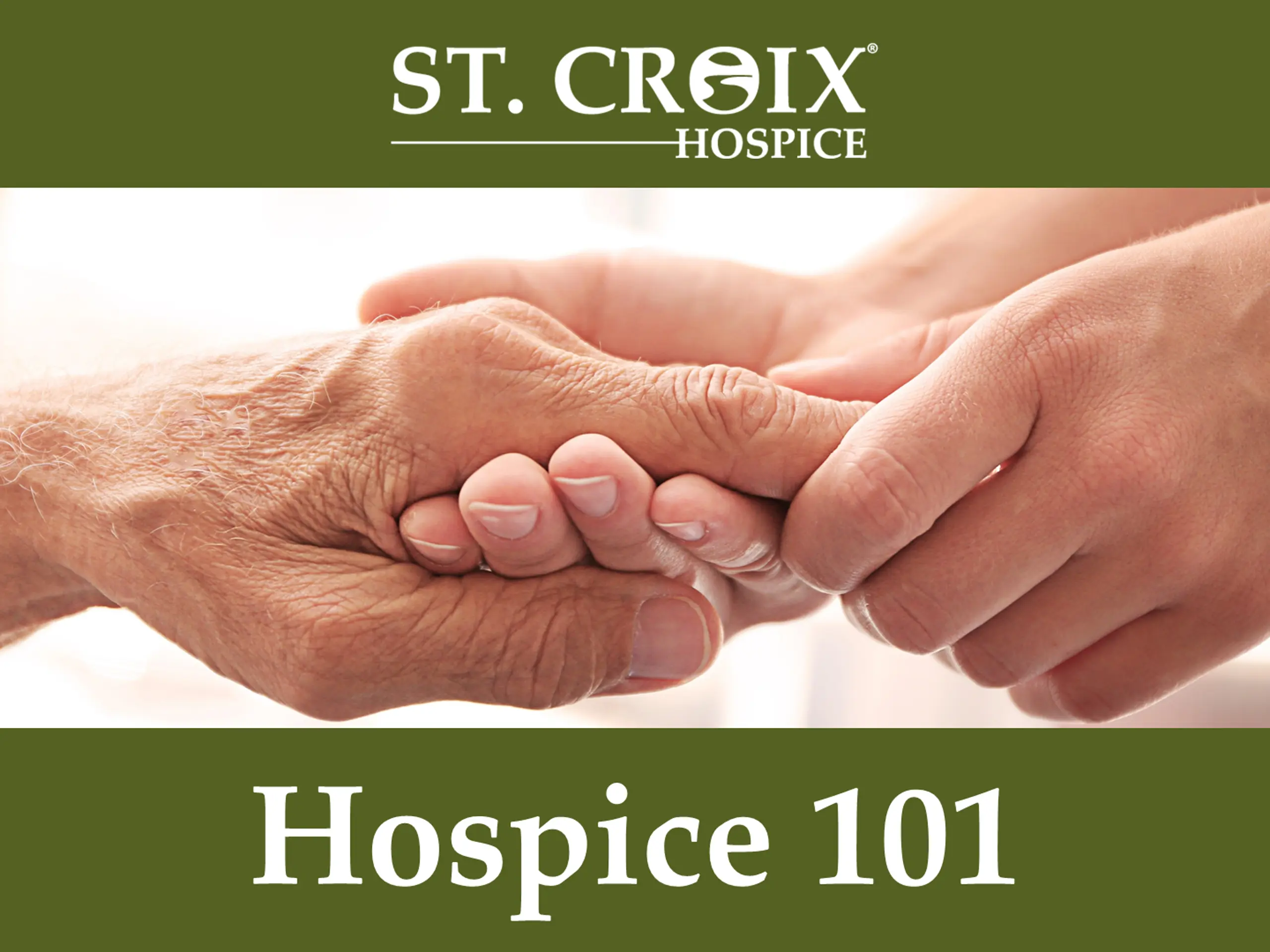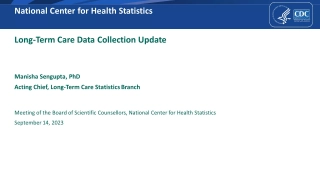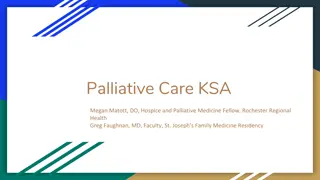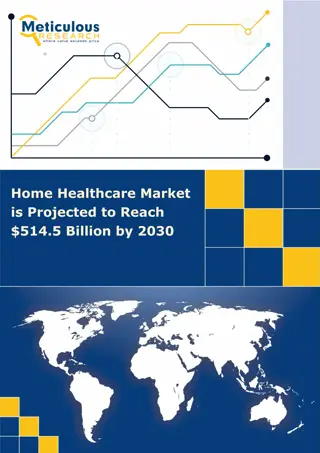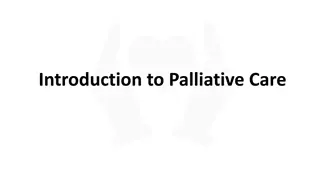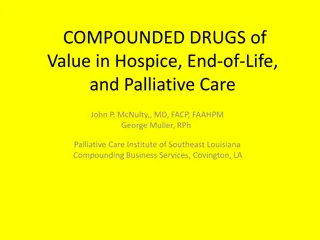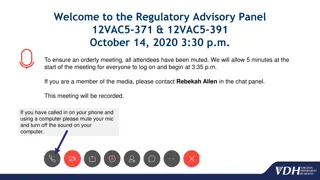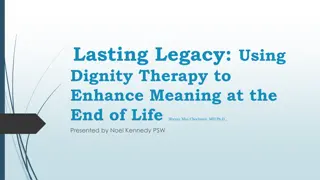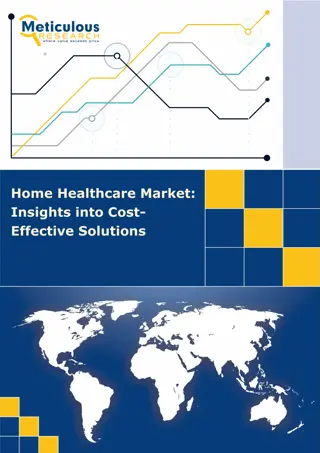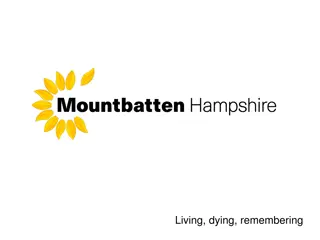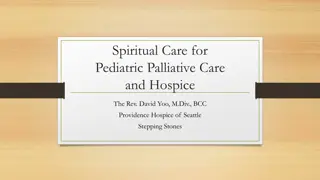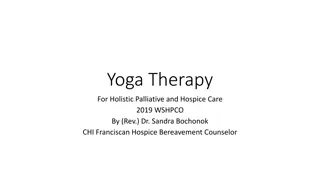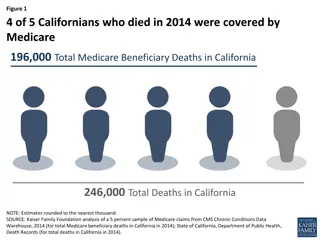Hospice 101
The history of hospice, the benefits it offers, and the care team involved in providing holistic end-of-life care. Learn about the Medicare hospice benefit and the various physical, psychosocial, and spiritual care management services available.
Download Presentation

Please find below an Image/Link to download the presentation.
The content on the website is provided AS IS for your information and personal use only. It may not be sold, licensed, or shared on other websites without obtaining consent from the author.If you encounter any issues during the download, it is possible that the publisher has removed the file from their server.
You are allowed to download the files provided on this website for personal or commercial use, subject to the condition that they are used lawfully. All files are the property of their respective owners.
The content on the website is provided AS IS for your information and personal use only. It may not be sold, licensed, or shared on other websites without obtaining consent from the author.
E N D
Presentation Transcript
St. Croix Hospice Values Integrity Collaboration Accountability Respect Excellence
Objectives History of Hospice Benefits of Hospice Where Hospice is Provided The Hospice Care Team Hospice Eligibility Hospice Myths
You matter because of who you are, and you matter to the last moment of your life. We will do all we can, not only to help you die peacefully, but also to live until you die. -Dame Cicely Saunders Founder of the Hospice Movement
History of Hospice 1974: America s first hospice, The Connecticut Hospice, began providing hospice care in the home, funded by the National Cancer Institute. 1993: Hospice is introduced as a nationally guaranteed benefit under President Clinton s health care reform proposal. Hospice is now an accepted part of the health care continuum.
History of Hospice Early mandates of hospice Hospice recognizes dying as part of the normal process of living Hospice focuses on maintaining quality at the end of life Hospice neither hastens nor postpones death Through appropriate care, patients and their families may be free to attain a degree of mental and spiritual preparation for death
Medicare Hospice Benefit To be eligible to elect hospice care under Medicare, an individual must be entitled to Part A of Medicare and be certified as being terminally ill. An individual is considered terminally ill if the medical prognosis of life expectancy is six months or less if the illness runs its normal course. Hospice admits a patient only on the recommendation of the medical director with input from the patient s attending physician.
Benefits of Hospice Physical Care Management Psychosocial Care Management Spiritual Care Management Alternative Therapies Volunteer Support Grief & Bereavement
Benefits of Hospice Making the most of life Hospice is often equated with end-of-life medical care. But hospice benefits reach far beyond a patient s physical condition to cover the spiritual and psychosocial needs of the patient as well as the family. Medical care Hospice s expertise in care assures the patient state-of-the-art symptom management and pain control, improving quality of life A hospice nurse and hospice aide are assigned to each patient to manage medical needs The freedom to choose One of the great fears of terminally ill patients is losing control over what happens to them. Hospice supports the individual wishes of each patient and family.
Benefits of Hospice Preventing hospitalizations/rehospitalization Studies have shown hospice care can dramatically reduce hospitalizations. This is possible because of a well constructed plan of care, including an interdisciplinary team approach delivered directly wherever the patient calls home. 24/7 Availability Expert hospice team offer patients and families access to professionals 24 hours a day, seven days a week, including nights, weekends and holidays. Continued communication & education Much anxiety surrounding end-of-life care comes from simply not having answers. At St. Croix Hospice, there is always a ready resource with reliable information, guidance and reassurance for the patient, family and facility staff.
Benefits of Hospice Patient Centered Care Palliative (comfort) vs. curative care Symptom management Changing needs of patients and families Respect for patients Autonomy Security
Benefits of Hospice A Coordinated Interdisciplinary Team Approach This interdisciplinary approach is widely considered to be one of the most important benefits of hospice care.
Benefits of Hospice Facility Centered Care Facility staff are an important part of the team of primary caregivers Communication is key and hospice heavily involves the facility Hospice teams follow facility regulations and protocols Hospice care complements the care provided by facility staff Hospice promotes collaboration and customization that supports patients, families and facilities
Benefits of Hospice Research Indicates: Studies show patients who chose hospice care live an average of 29 days longer than those who do not have hospice care Family members report greater satisfaction in care of their loved one and support with hospice care Facility and community staff have been shown to be able to provide higher quality care when residents and families choose hospice care
Benefits of Hospice Hospice support includes: An interdisciplinary team Durable medical equipment (DME) related to terminal diagnosis Hospice medications/supplies related to terminal diagnosis
Levels of Hospice Care Level 1: Routine Care Level 2: Continuous Care Level 3: General Inpatient Care Level 4: Respite Care Determining Level of Care Qualifying for hospice, the patient s primary care provider and the hospice physician must identify a patient is terminally ill, with a life expectancy of six months or less; given the prognosis follows its standard course.
Levels of Hospice Level 1: Routine Home Care Routine home care is the main level of care under the hospice benefit Care includes: Nursing services Physician participation Social services Home health aide services Counseling services (pastoral, spiritual, bereavement, dietary, and others) Medications Medical equipment Medical supplies Lab and diagnostic studies related to terminal diagnosis Therapy services
Levels of Hospice Level 2: Continuous Home Care Typically short-term in nature, used during periods of crisis to achieve management of symptoms and reevaluated every 24 hours Continuous care cannot be provided in a skilled nursing facility, hospital or inpatient care facility Although called continuous, care does not need to be continuous, but it must total eight hours or more within the 24-hour period (midnight to midnight) by a nurse or aide At least 50% of the total continuous care hours must be provided by a nurse Some examples of symptoms requiring continuous care would be: Unrelieved pain Severe nausea and vomiting Severe shortness of breath Anxiety or panic attacks A breakdown in the primary caregiver support system
Levels of Hospice Level 3: General Inpatient Care Some patients have short-term symptoms so severe they cannot get adequate treatment at home. Symptoms requiring inpatient care are the same as those requiring continuous care, only the setting of care may be different. With inpatient care, nurses are available around the clock to administer medications, treatments, and emotional support to make the patient more comfortable. There are several types of facilities that offer inpatient hospice services: A free-standing facility owned and operated by a hospice company An inpatient hospice unit within a hospital A hospice unit in a skilled nursing facility (nursing home)
Levels of Hospice Level 4: Respite Care Respite care services are more for the family than the patient. If the patient does not meet criteria to qualify them for continuous care or inpatient care, but the family is having a difficult time, respite care may be an option. If a patient s family is the primary source of care and cannot meet their loved one's needs due to caregiver stress or other extenuating circumstances, a patient may temporarily be admitted to an inpatient environment to give the family a needed break or respite. There is a five-day limit on respite care. Once that period expires, the patient is discharged and returns home.
Where Hospice is Provided Anywhere a patient calls home Patient s home Family member s home Assisted living facility Nursing facility Residential care home No one is turned away due to race, religion, gender, sexual orientation, disabilities, communicable disease, national origin or ability to pay.
Hospice Diagnoses Heart disease/chronic heart failure Pulmonary disease/chronic obstructive pulmonary disease Cancer Liver disease Kidney disease/renal failure Alzheimer s and other dementia-related disorders (Frontotemporal disorders, Lewy body dementia vascular dementia) Stroke
Hospice Myths Myth: My loved one is already receiving care from a facility. What more can hospice do? Reality: Hospice will complement the facility care by providing additional 1:1 care and support for you and your loved one at the end-of-life.
Hospice Myths Myth: I worry my loved one will die more quickly if signed up for hospice care. Reality: Research shows patients live an average of 29 days longer than patients without hospice care.
Hospice Myths Myth: My loved one cannot afford to pay for additional health care services. Reality: Hospice is covered by Medicare, Medicaid and most private insurance.
Resources Standards of a Hospice Program of Care Journal of Pain and Symptom Management Hospice Institute of the Florida Suncoast National Hospice and Palliative Care Organization: www.nhpco.org Dame Cicely Saunders St. Christopher's Hospice: www.stchristophers.org A Perspective on the End of Life: Hospice Care: www.medscape.com
Questions?? Hospice 101
